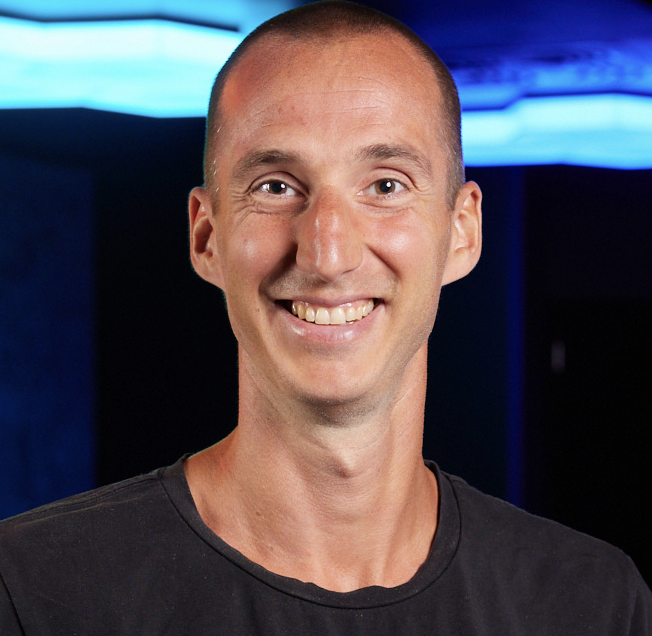Last week I visited South by Southwest (SXSW) in Austin, Texas in the US with some of my colleagues, for the first time since 2017. This amazing event is always incredibly inspiring. It enables me to connect with global peers and catch up on the latest developments in the tech scene. Time to look back and reflect.
With all the recent developments around artificial intelligence, SXSW's program was full of companies and speakers working on AI-related topics. A highlight of the first day was the presentation by Greg Brockman, the amiable co-founder and president of OpenAI. It was particularly notable that even he cannot actually oversee the full consequences of the ground-breaking AI products his company is creating, like the disappearance of jobs or all the ethical and copyright issues. He tended to avoid these topics as much as possible, and this appeared to be a recurring theme at SXSW. There was enormous optimism and excitement about the unprecedented possibilities of AI, yet at the same time there was also a considerable amount of uncertainty about the future and the social and legal aspects. Brockman appeared predominantly optimistic and confident that we, as humans, will figure it all out together. I agree with him and also believe it is going to work out in the end. We are currently getting access to more and more tools and virtual assistants to increase our productivity. This has numerous benefits, yet it also requires some regulation. However, for us, the main focus point is to learn how best to manage these assistants. Eventually, we will all be managers of a team of some kind of virtual interns.
Health is wealth
This same optimism was evident in the many sessions on health and responsible technology use. We are clearly at a turning point in our technology journey. 'Health is wealth' and 'food is medicine' are the new credos, and technology must be better used to make us healthier and happier. Apple talked about the Apple Watch and scientific techniques for monitoring your health, calorie consumption and other data, for example. Apple wants to enrich people's lives with this kind of technology by turning us into better-informed patients, while safeguarding our privacy remains a priority. In addition, Apple is contributing to research on women's monthly cycles, especially among underprivileged populations, as there is far too little funding for this. The core idea at SXSW, however, was that we will not become happier by trying to track and optimize everything around our health. Human needs should be leading, not technology.
It was also clear that controlling ‘screen time’ and reducing digital distractions is an important part of improving our mental health. Good communication about this is essential. It should be informative and not stressful, and in this regard, word usage and the right visuals are crucial.
It was also notable that an entire track was devoted to the therapeutic uses of psychedelics. We heard many inspiring stories, including from renowned mycologist Paul Stamets, how medical research and the increased use of these types of drugs will increasingly replace traditional medication in the future.
Alternative realities
Due to the sheer AI frenzy, we would almost forget the other big topic: alternate realities. There were many sessions on this topic as well, with considerable emphasis on making these types of virtual experiences safe and inclusive. It was also interesting to realize how digital natives of Generation A & Z deal with this kind of technology versus the older generations. The younger generations fully embrace it, but at the same time are more susceptible to negative aspects like addiction, bullying, racism and sexism. For most people, using a virtual reality headset is still too high a barrier for something like the Metaverse to succeed. Perhaps Apple's long-awaited augmented reality glasses could eventually change that.
Interactive content
This brings me to another important topic, being the emergence of a new phenomenon: interactive content. Partly due to the rise of AI, it is becoming increasingly easy to experience and reuse all kinds of content in new ways. For example, tools like ChatGPT offer the ability to ‘engage’ with all kinds of content, from written text to images and videos. One can also think of interactive Netflix specials, such as Black Mirror: Bandersnatch, where you can make your own choices during the course of a series. It goes much further than that, though. Through AI, we can increasingly decide for ourselves how we want to consume certain content. For example, a written text can easily be summarized on demand and converted to audio or video. And in time, we could even generate new episodes of our favorite TV shows.
Synthetic connections
The last observations I would like to share with you are the insights from the session by Nick Law, Global Lead for Design & Creative Tech at Accenture Song. In his fantastic talk, he explained how we need to facilitate so-called ‘synthetic connections’ within organizations to achieve the best creative output. Where companies traditionally always tend to focus on process, there should be much more emphasis on gathering the right people and having them work together with their own synergy and creativity. Not transactional relationships, but symbiotic collaboration where people are allowed to function in their own strength. Ultimately, this produces much better results than trying to capture the creative process in a tightly defined process. A telling example of such a creative collaboration between a copywriter and an artist is the famous 1959 ‘Think Small’ Volkswagen ad.
All in all, SWSW 2023 was a superb experience that, as usual, inspired me to the fullest. It gave me a glimpse into the future of all the rapid technological developments, and it made me hopeful that - despite the focus on artificial intelligence and virtual environments - there is an increasing focus on humans and the health aspects of technology.






